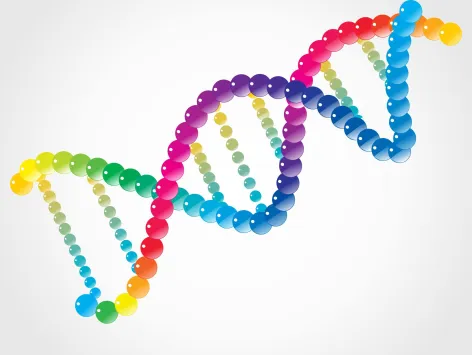MALE EXTERNAL GENITAL ORGAN
PENIS
- The male external genital organ refers to the anatomical structure that is visible on the outside of the male body and is involved in reproductive functions.
- The penis is the male copulatory organ. The organ in question is a cylindrical and erectable structure, which is pendulous in nature and is suspended from the pubic region, located anteriorly to the scrotum.
- The male genital organ typically maintains a flaccid state, characterized by its small and limp appearance. However, upon sexual arousal, it undergoes a transformation, becoming elongated, rigid, and erect, thus preparing for the act of copulation, also known as coitus or intercourse. The average length of the erect human penis is approximately 15 cm.

T.S. of penis
- The penile mass is enveloped by a fibrous sheath known as the tunica albuginea. The composition of the penile interior primarily consists of three cylindrical structures composed of spongy, erectile tissue known as cavernous tissue.
- Two of these cords are thicker and positioned in parallel on the right and left sides, constituting the corpus cavernosum of the penis that remains anteriorly when flaccid, but becomes superior-posterior when erect.
- The pair of cords in question are referred to as corpora cavernosa.
- The fibrous tissue of the tunica albuginea envelops both cords collectively and establishes an individual sheath around each cord. Certain fibers create a partition, known as the septum penis, that separates these cords.
- The third, smaller cord is a component of the penis that remains located inferior-anteriorly during penile erection. The urethra traverses this anatomical structure. Therefore, this anatomical structure is referred to as the corpus urethrae or spongiosum.
- The corpus spongiosum, when extended, undergoes enlargement, resulting in the formation of a bulged, conical structure known as the glans penis. The external layer of the glans is comprised of a thin, sleek, and lustrous epidermis, devoid of hair follicles.
- The anatomical term used to describe the base line of the glans is known as the neck of the penis. The integumentary tissue surrounding the male genitalia possesses the ability to fold and retract, particularly in the region of the glans. The anatomical term for the retractable fold of skin covering the glans of the penis is commonly referred to as the foreskin or prepuce.
- Located at the apex of the glans penis, one can find the external urethral orifice, also known as the meatus. This anatomical structure serves as the opening through which the urethra expels urine or semen.
- The preputial glands, which are located in the dermis of the penile neck, produce a sebaceous substance known as smegma. The presence of microbial infection within smegma can lead to the development of irritation.
GLANDS
- Glands are specialized organs in the human body that produce and secrete substances.
- The seminal vesicles are a pair of tubular and coiled glands located posterior to the urinary bladder. The organisms in question produce a dense fluid that comprises the majority of the ejaculatory substance. The composition of seminal fluid includes fructose, citric acid, inositol, and prostaglandins.
- The prostate gland is a gland with a chestnut shape, consisting of 30-40 tubulo-alveolar glands. It is located at the base of the bladder and surrounds the base of the urethra. It provides an alkaline substance to the seminal fluid.
- The prostate gland facilitates the activation of sperm and mitigates the potentially detrimental impact of urine on sperm viability. The prostatic fluid imparts a distinctive aroma to the seminal fluid. The prostate gland is responsible for the secretion of various substances, including citrate ions, calcium, phosphate ions, and profibrolysin.
- The bulbourethral glands, also known as Cowper’s glands, are small structures located in close proximity to the urethra at the base of the penis. These structures produce a thick lubricating substance.
- The secondary male sex organs encompass the duct system, accessory glands, and penis. The promotion of their growth, maintenance, and functions is facilitated by the secretion of testosterone by Leydig cells.
- In contrast, the regulation of growth, maintenance, and functions of seminiferous tubules and Leydig cells is carried out by follicle-stimulating hormone (FSH) and interstitial cell-stimulating hormone (ICSH) secreted by the anterior pituitary gland.
SEMEN
- The substance commonly referred to as “semen” is a biological fluid that is produced by the male reproductive system. Semen is comprised of a combination of spermatozoa and the various secretions originating from the seminiferous tubules, seminal vesicles, prostate gland, and bulbourethral glands.
- The typical quantity of seminal fluid expelled during ejaculation ranges from 2.5 to 5 milliliters, accompanied by a sperm count (concentration) of approximately 200 to 300 million. In order to achieve optimal fertility, it is recommended that a minimum of 60 percent of sperm exhibit normal morphology and size, while at least 40 percent demonstrate vigorous motility. When the concentration of spermatozoa in the semen drops below 20 million per milliliter, it is probable that the male is experiencing infertility.
- Semen exhibits a pH range of 7.2-7.7, indicating a mildly alkaline nature. The milky appearance of semen is attributed to the presence of prostatic secretion, while the sticky consistency is primarily due to the fluids derived from the seminal vesicles and bulbourethral glands.
- Semen serves as a medium for transporting spermatozoa and providing them with essential nutrients. It counteracts the hostile acidic conditions in the male urethra and the female vagina. Prostatitis refers to the inflammatory condition affecting the prostate gland.




